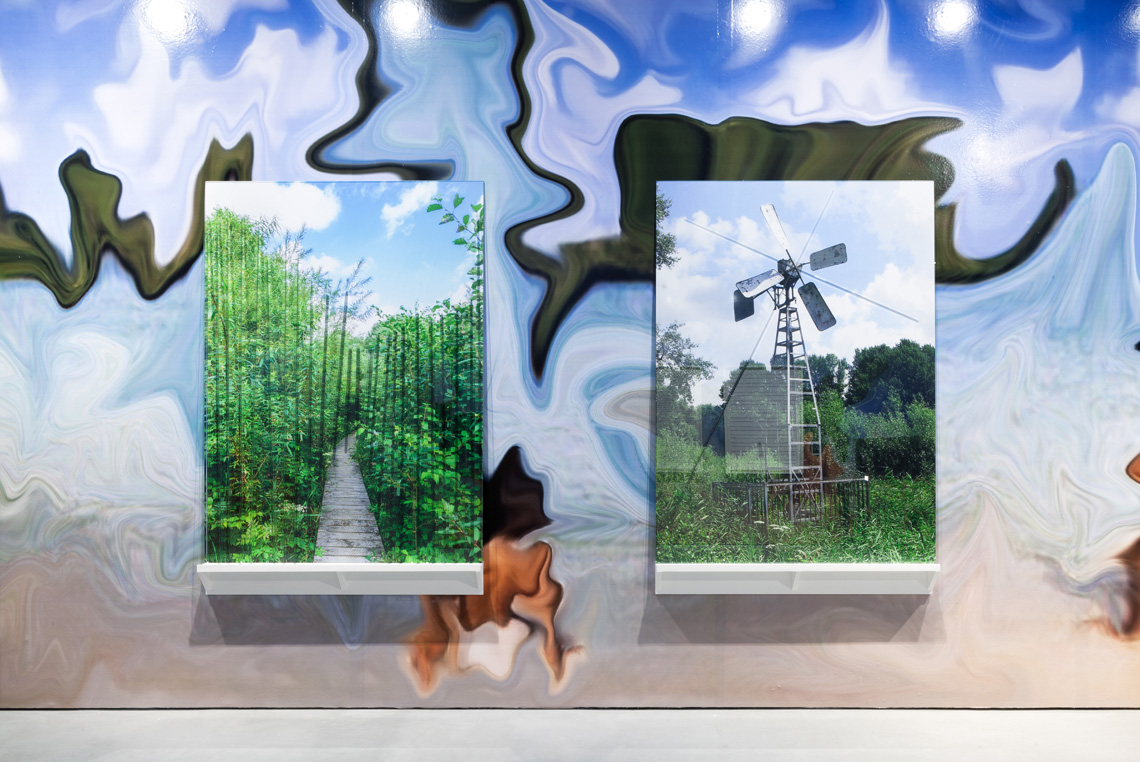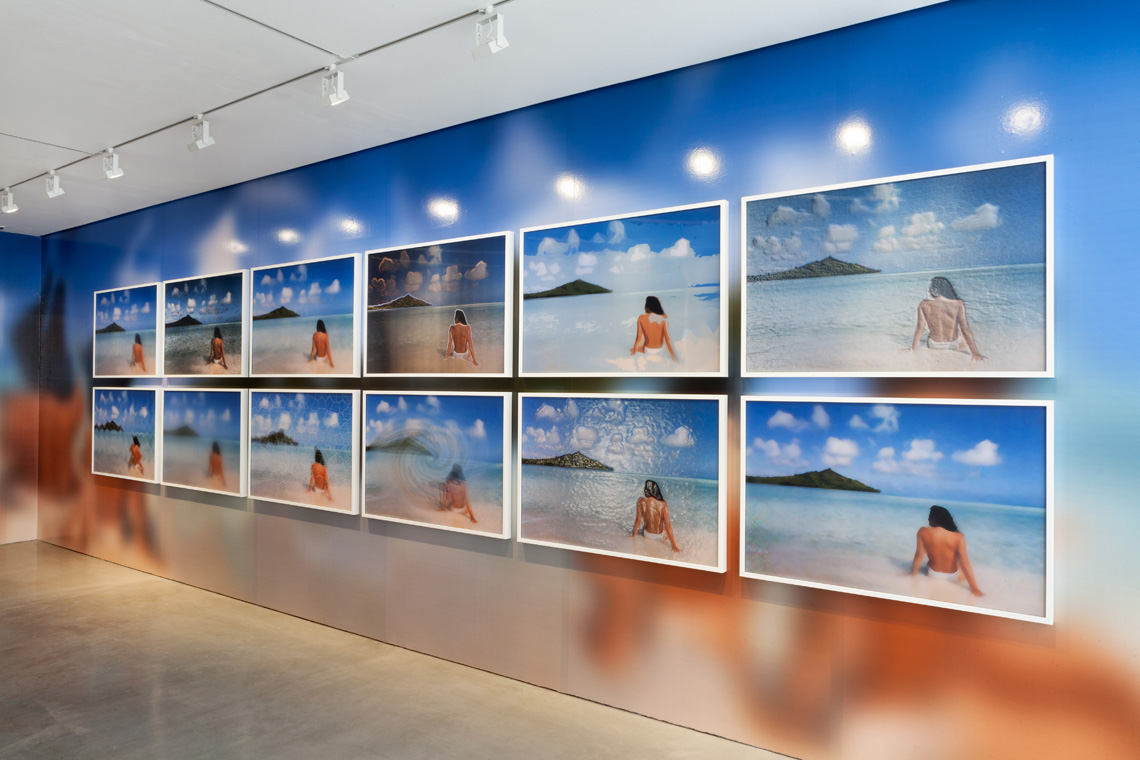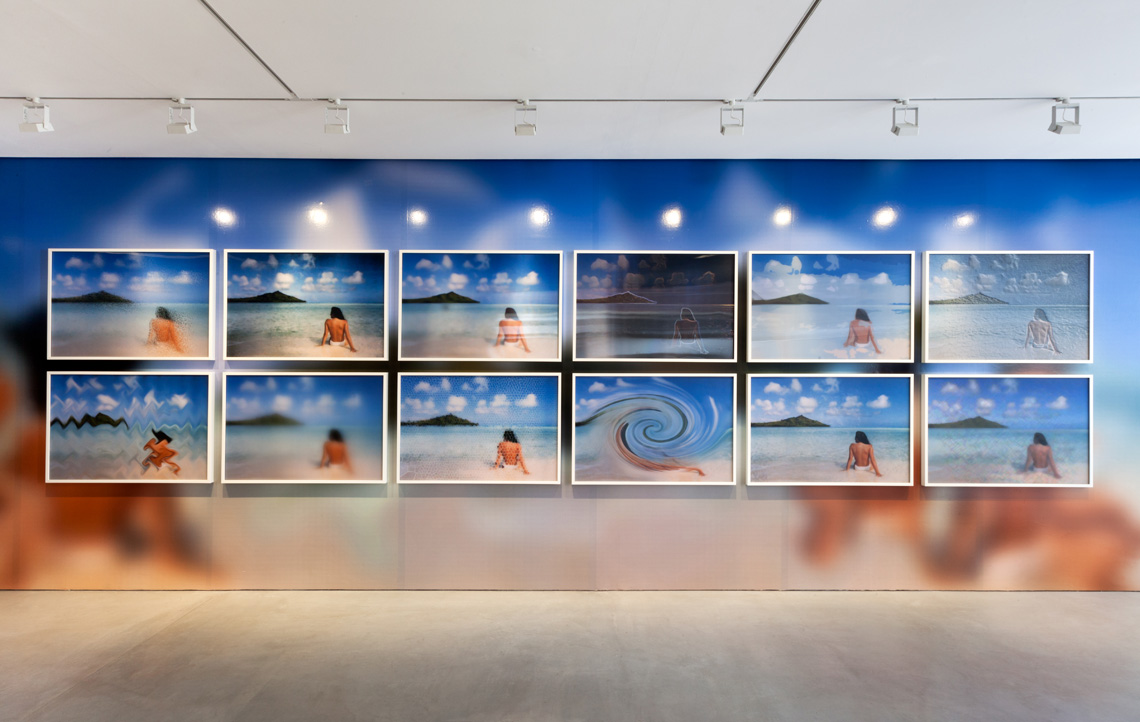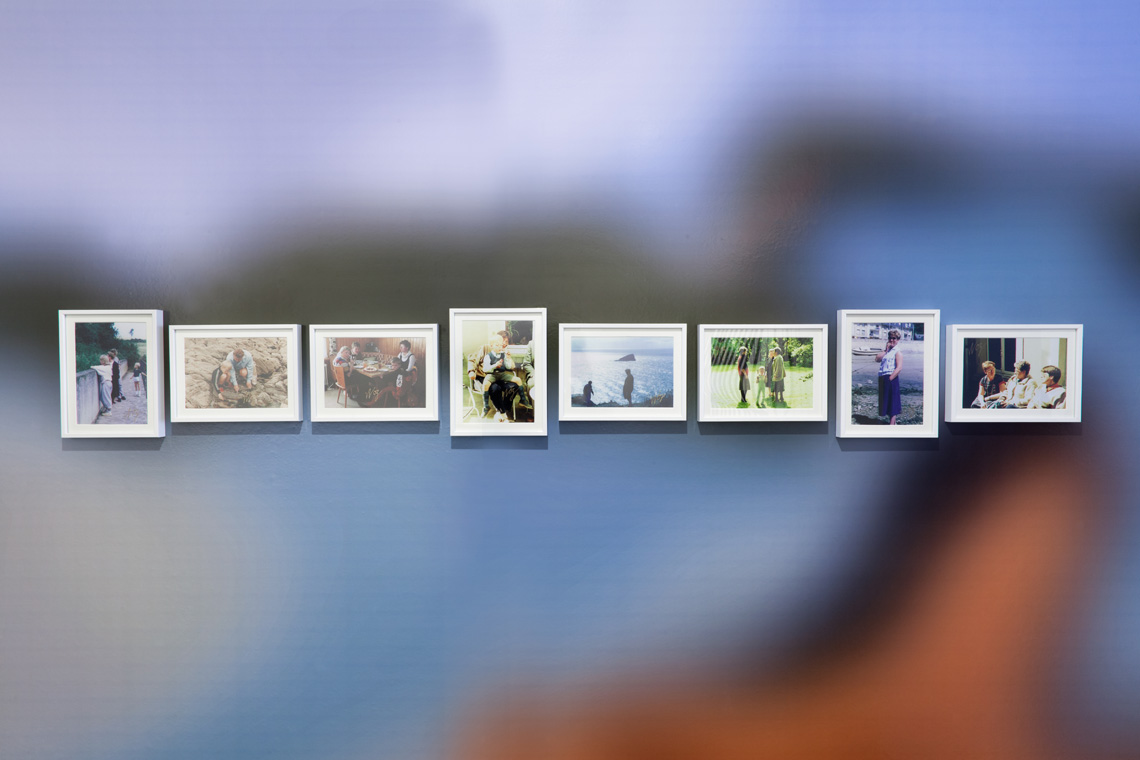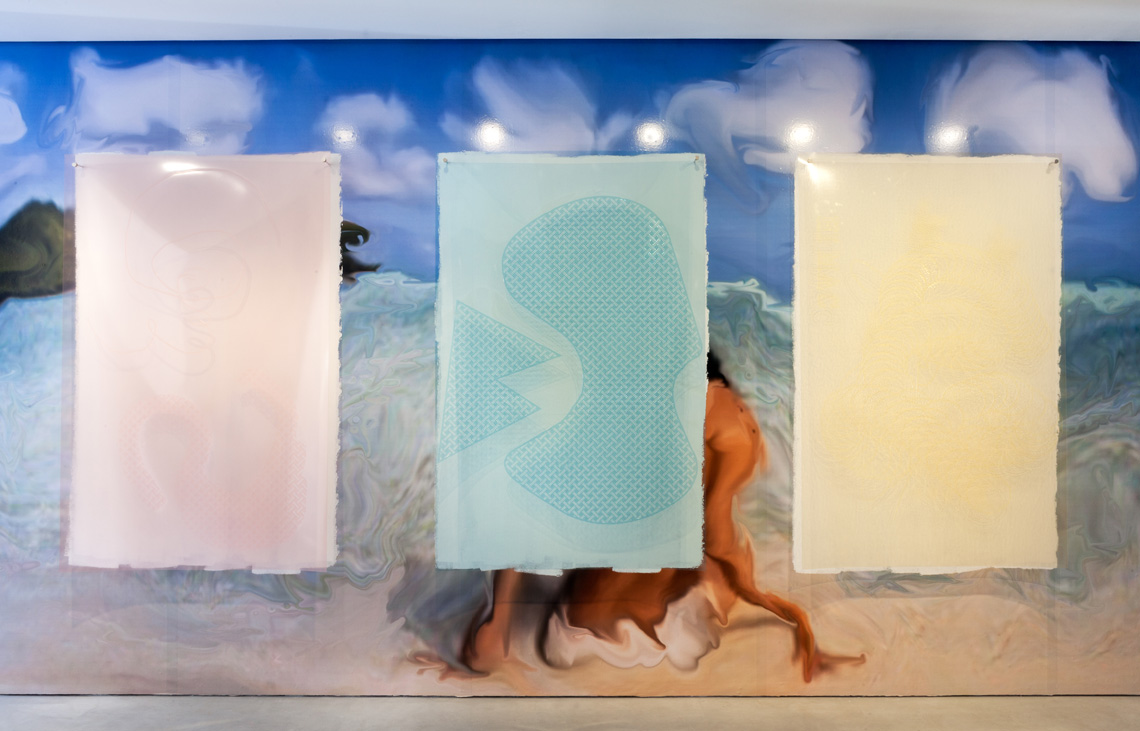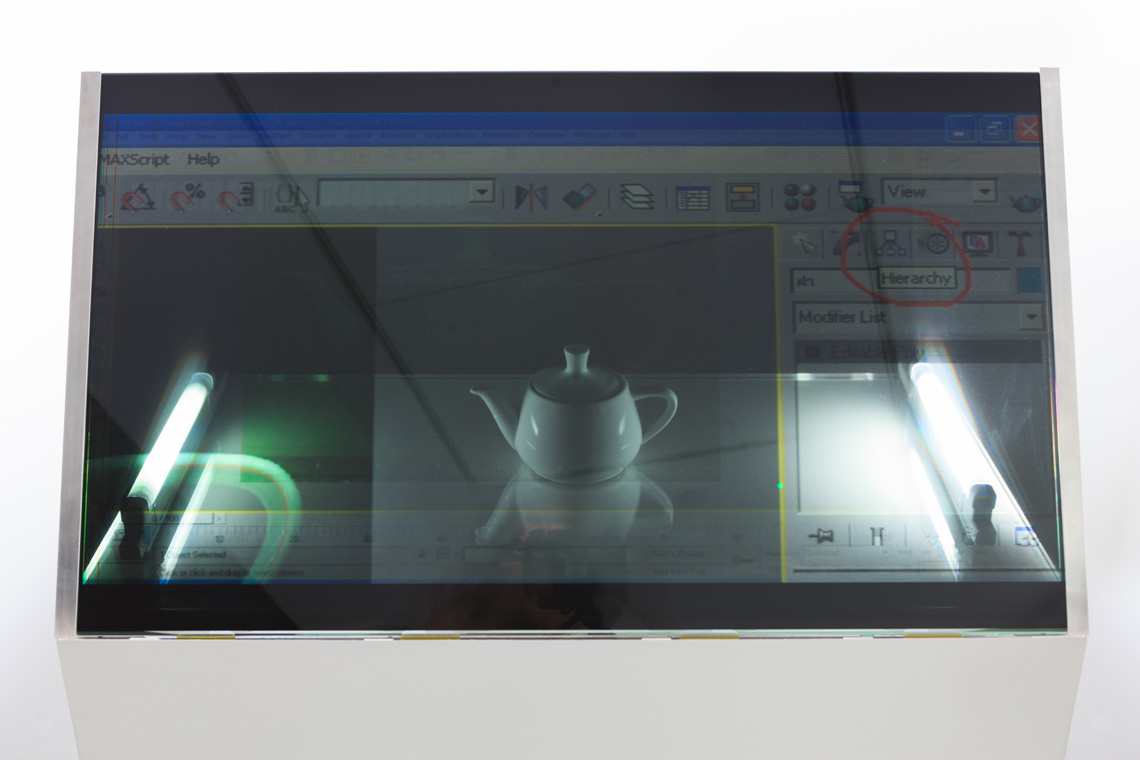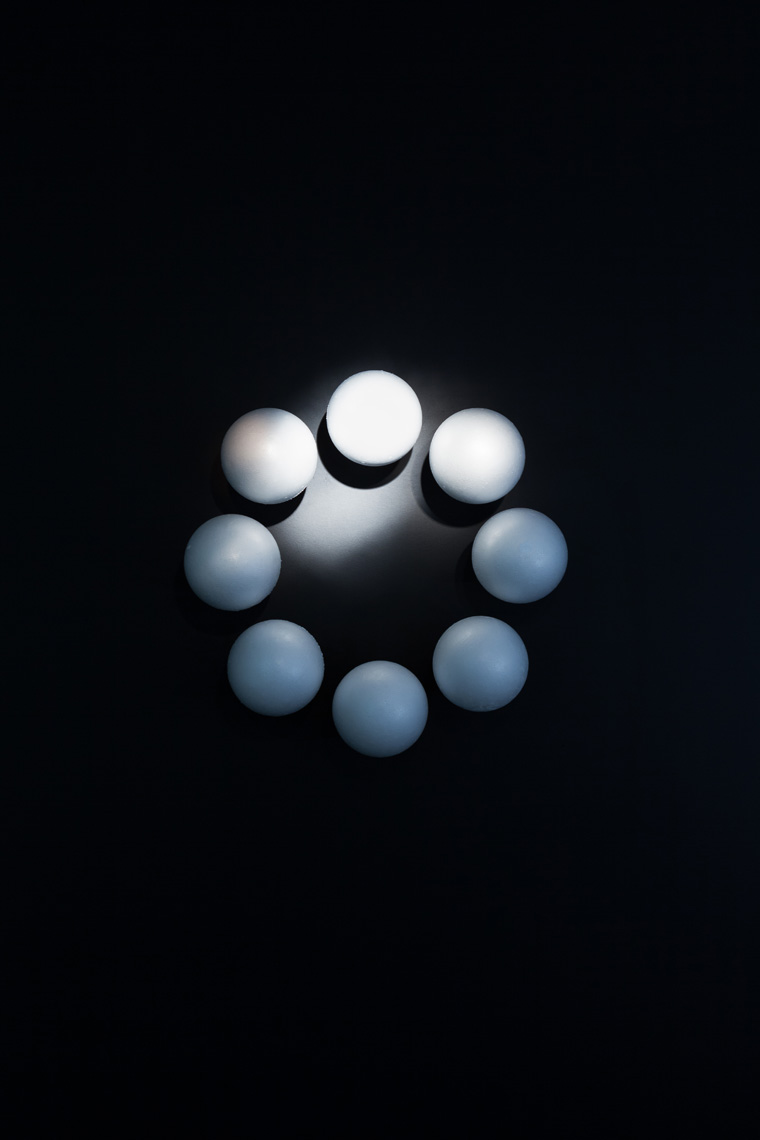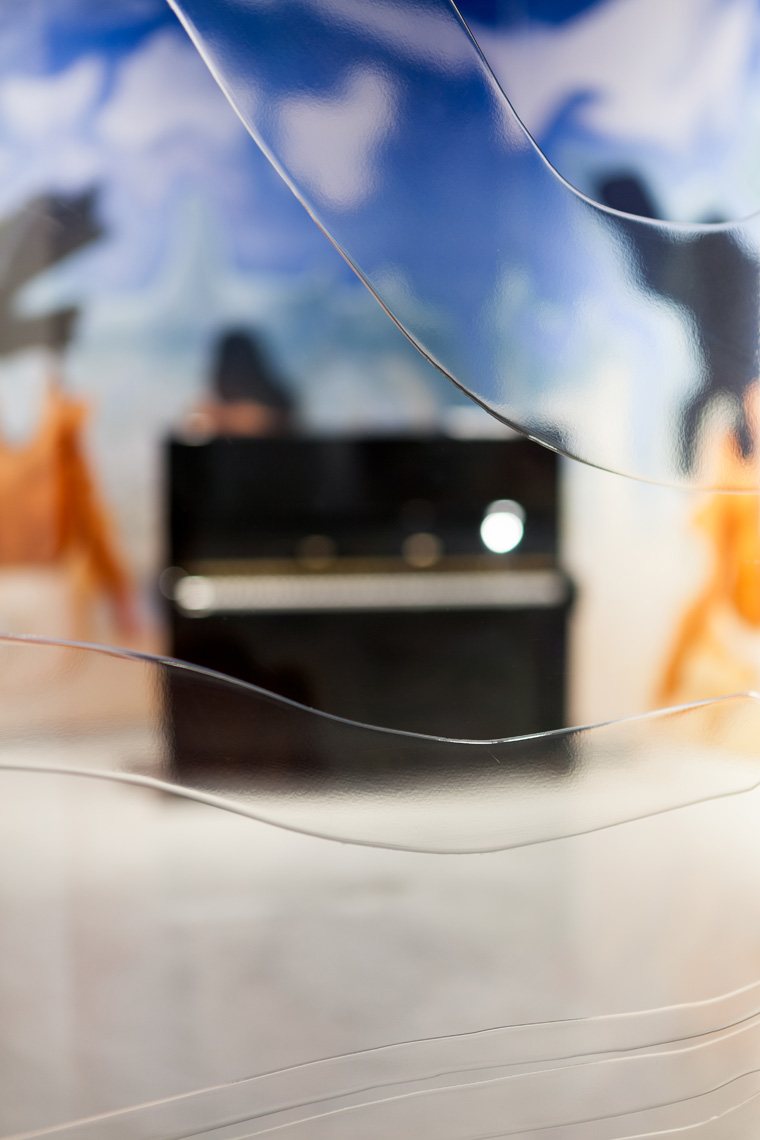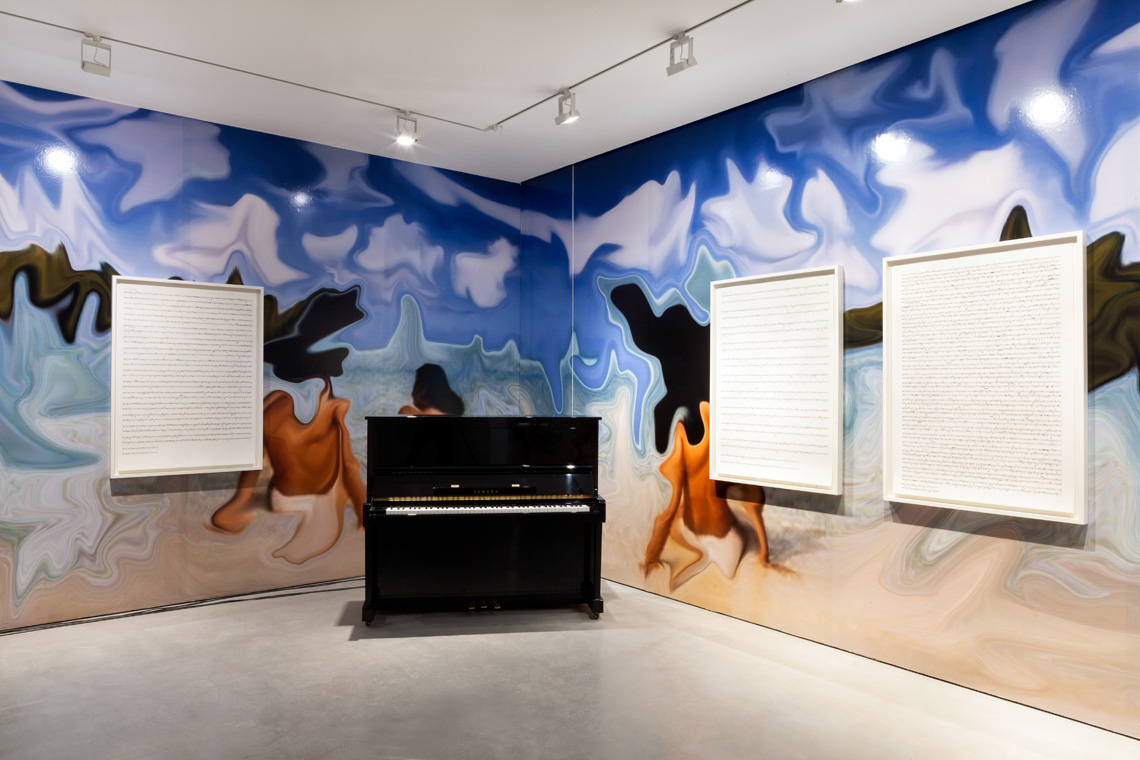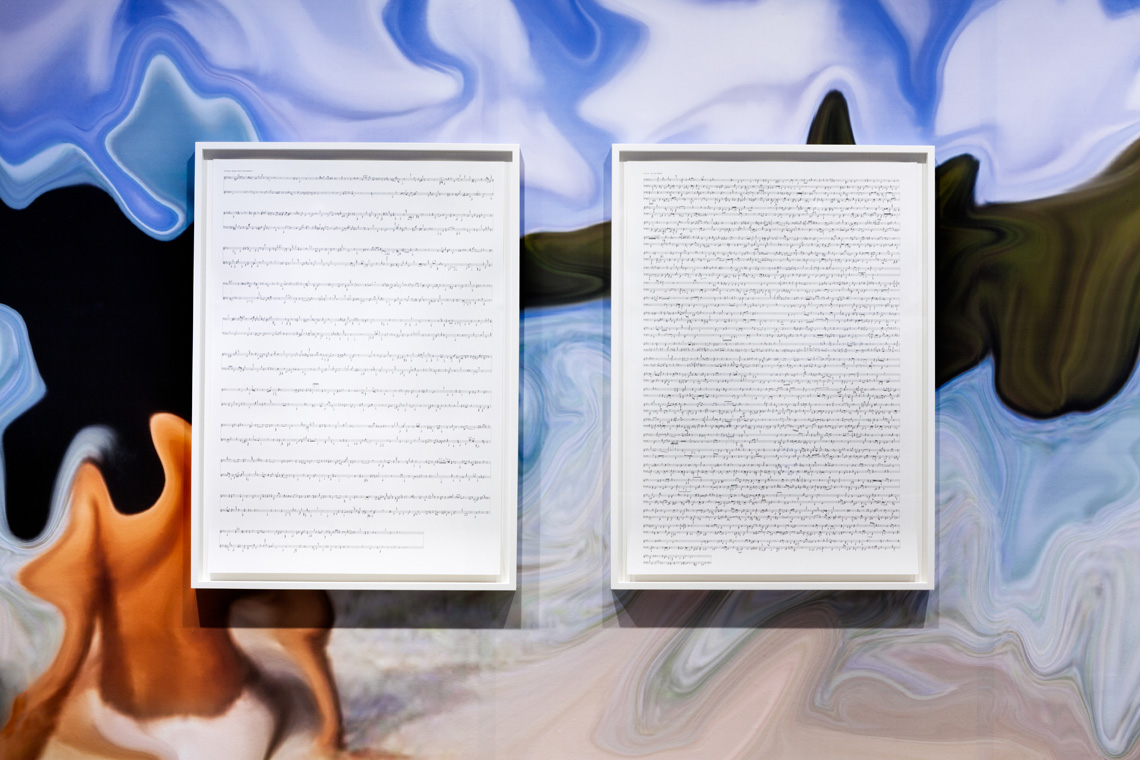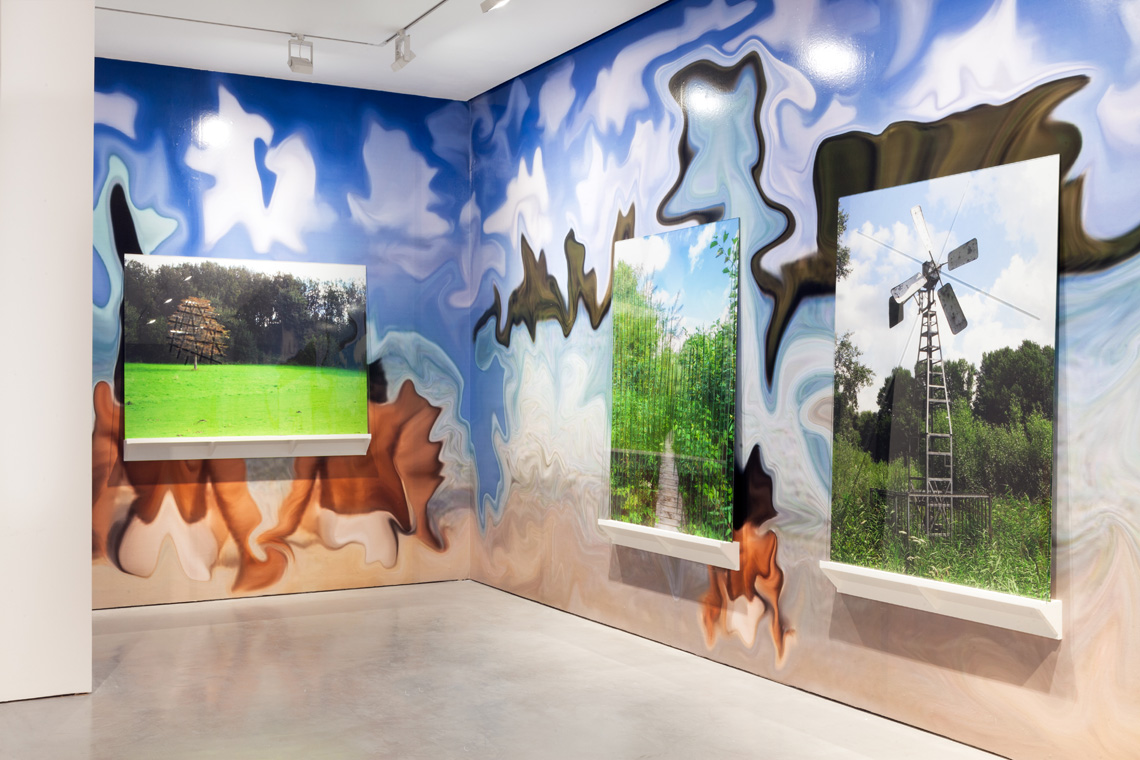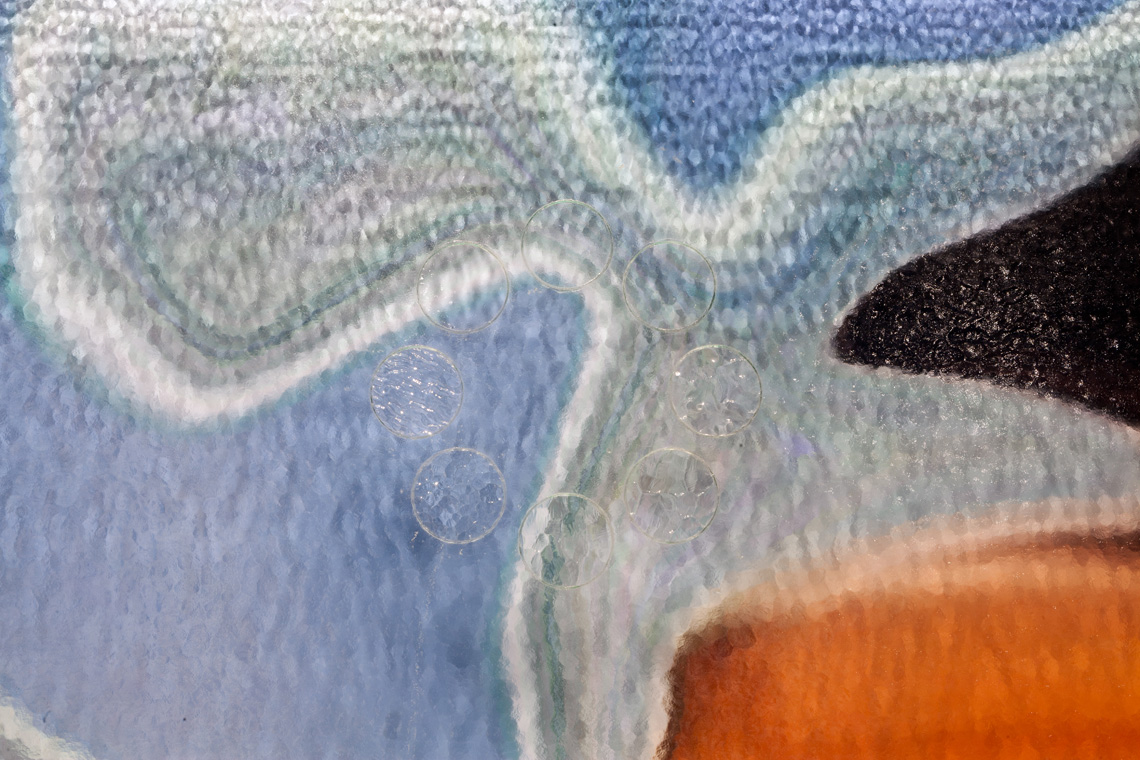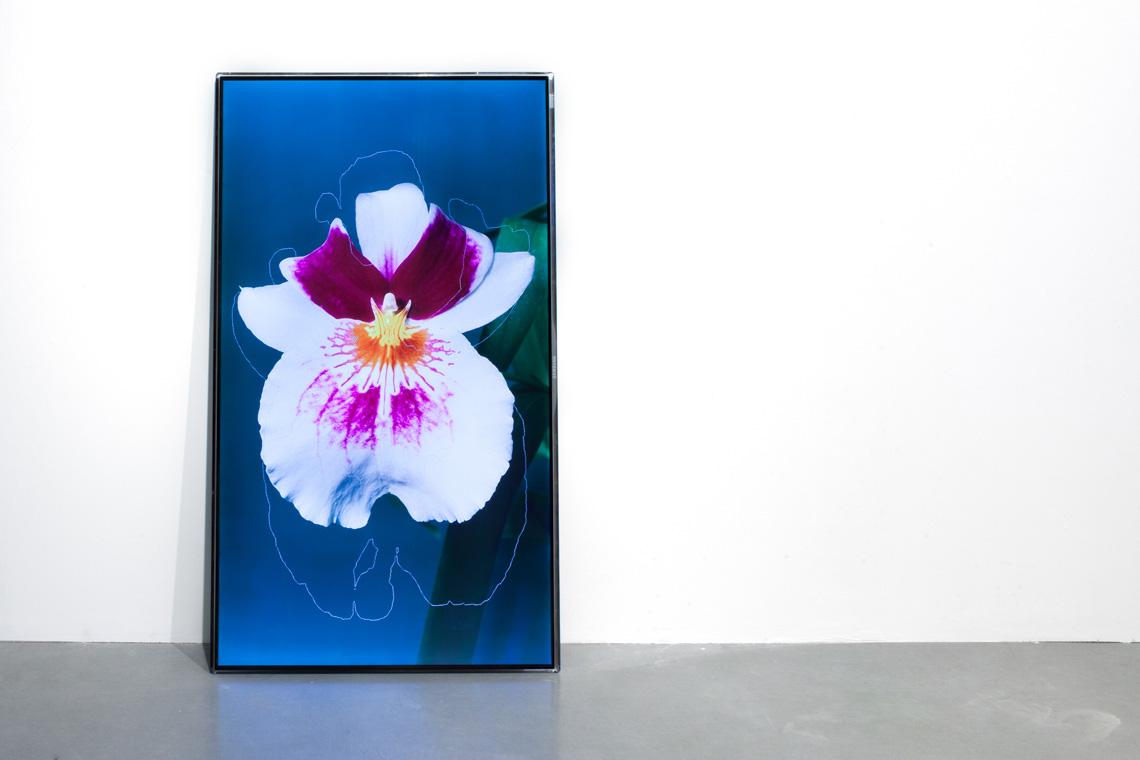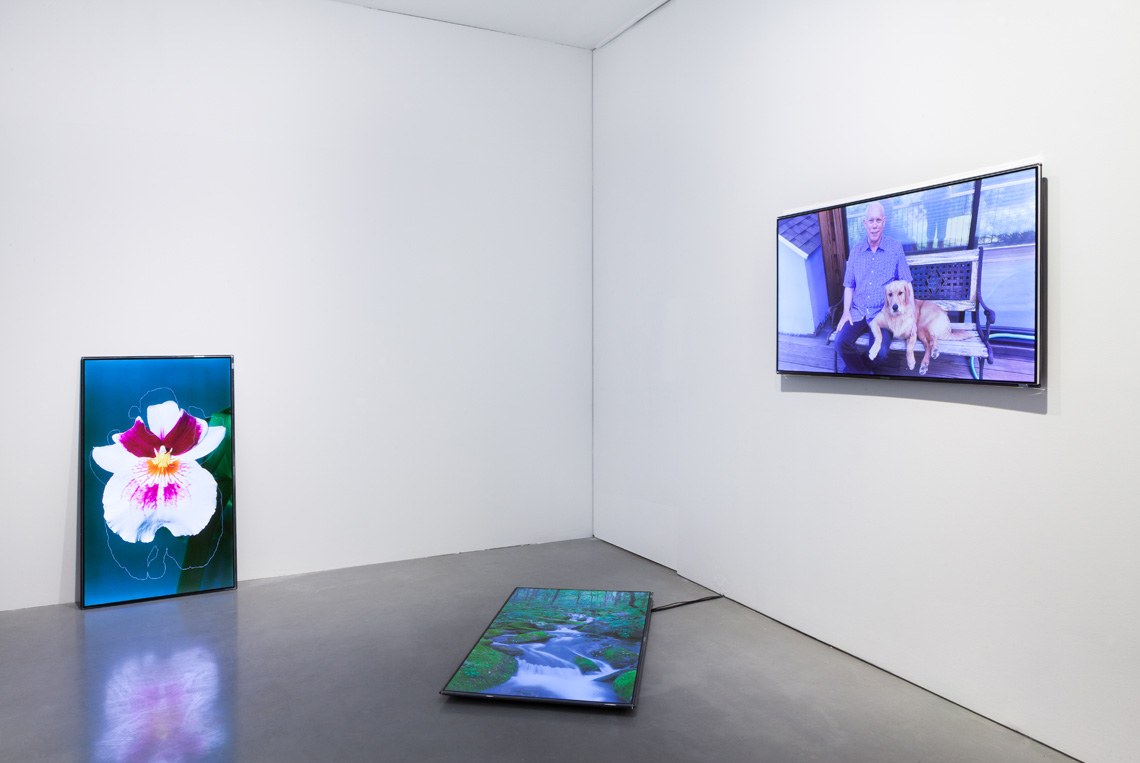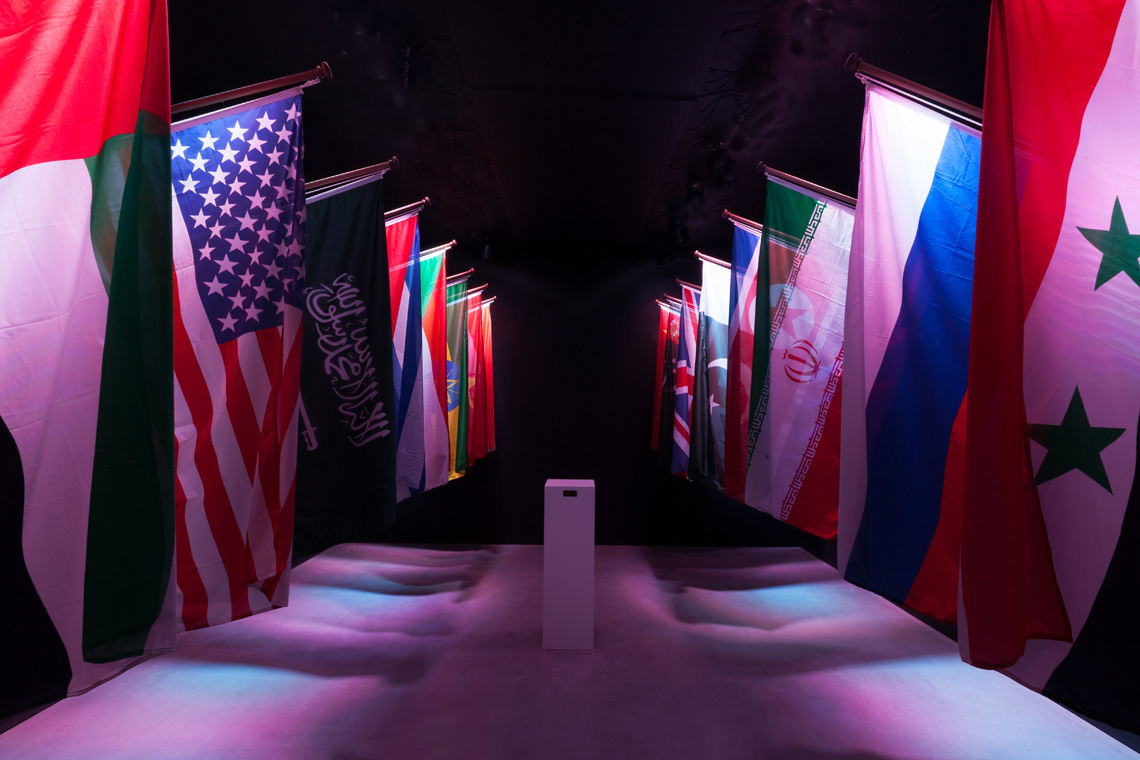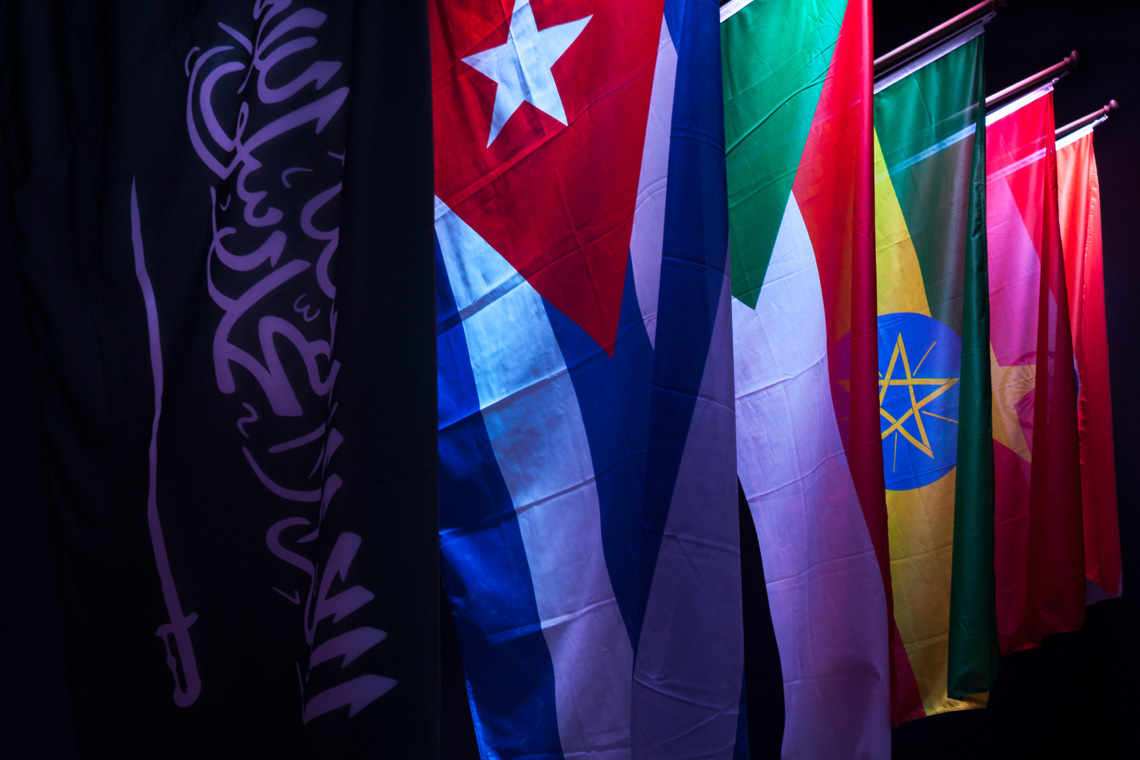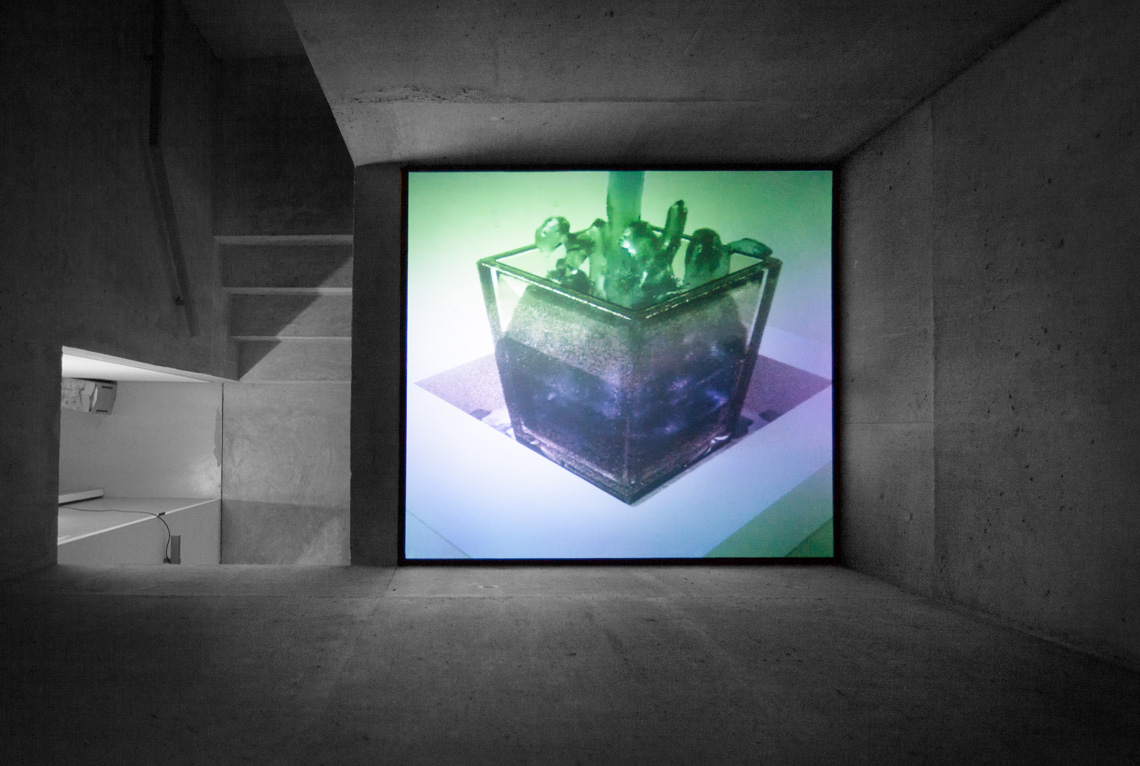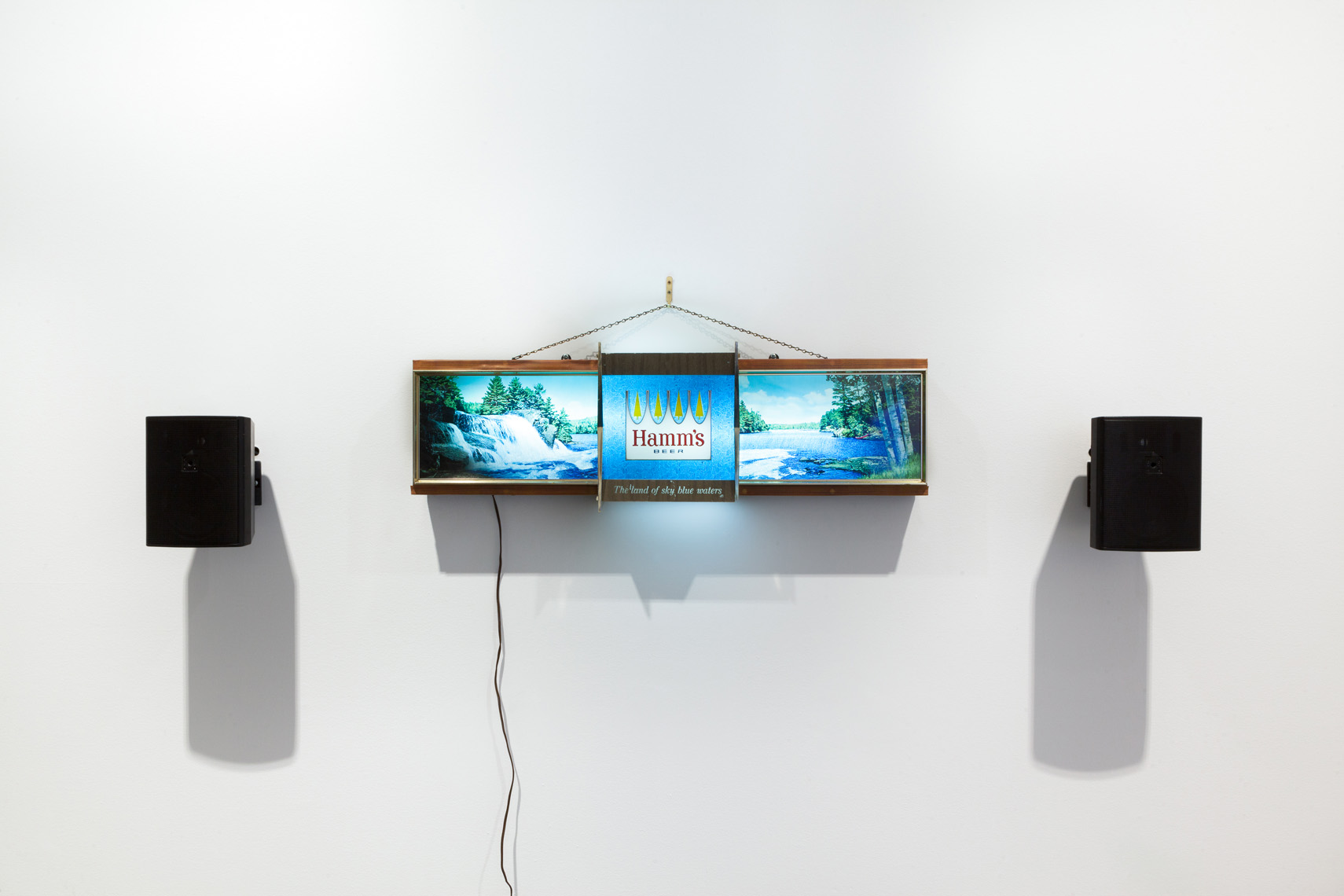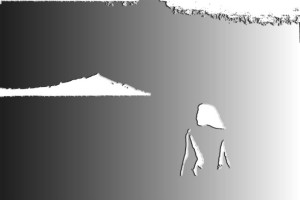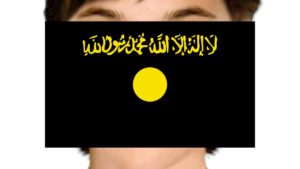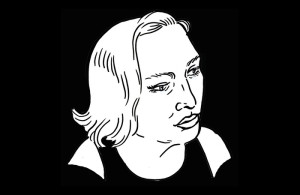Constant Dullaart‘s exhibition is dense. As the Berlin-based artist’s first UK show at London’s Carrol/Fletcher, it offers a generous insight into the complexities of networked media and the humans that exist both inside and outside its obfuscating structures of power.
Stringendo, Vanishing Mediators takes its title from the Italian word for “draw tight”, excavating the origins and originators of online and digital media as we know it and holding them to account for the corporatised hegemony at the core of an existing system of stark inequality. Drawing on Dullaart’s ongoing preoccupation with the original PhotoShop image of ‘Jennifer in Paradise‘, warped reproductions of said low-res screenshot use the same software’s current filters in ‘Jennifer in Photoshop’ (2014), hung grid-like across a wall papered with the image looming large and obscured via ‘guassian blur’. Other wall-length representations of the topless back of Adobe developer John Knoll‘s wife are distorted in a ‘liquify filter’ across varying brush sizes, while the anxious ambience of a playerless piano in ‘Feedback with Midi Piano’ (2014) ebbs under Dullaart’s updated ‘Terms of Service (TOS), Google 2014’ (2014) reciting its corrupted clauses: “we collect information to provide better services to all organisations”.

Garish and cheerily oppressive, the top floor acts as both altar and interrogation of the influence of the image, as another unanswered letter to Jennifer Knoll follows Dullaart’s 2013 one in Rhizome. It hangs unassumingly next the gallery exit as the artist creepily lists the names of Knoll’s children before praising her global impact as “a faint, blurry, pixelated focal point.” The ambivalent symbol of cast iron railings on the opposite wall melts into more ‘Jennifer’ wallpaper, while an official Olympics backpack hangs from said balcony of ‘Balconisation, London 2012’ (2014). It’s a reference to Dullaart’s recently published ‘Balconism’ manifesto, while the Stringendo exhibition plan adds: “Julian Assange sought refuge in the Ecuadorian Embassy”. With that one recalls the artist’s declaration, “every win fails eventually”. It’s no wonder the lightbox portrait, featuring a man and his dog and glimmering with the sillhouette after-effect of a PhotoShop ‘magic wand’ tool, is relegated to the downstairs. The 19 flags representing the “enemies of internet” (that is, the free one) –including the United States, Saudi Arabia, Russia, China, UK –are in a room around the corner, in the dark and underneath what you see upstairs.
Back in the light and on the floor above hang private Dullaart holiday snaps, signed in gold by Apple co-founder Steve Wozniak. There are large-scale demonstration drawings by Macpaint and dropdown menu-creator Bill Atkinson, and an exhibition invitation to John Knoll himself, all become part of the engulfing fabric of an impenetrable upstairs space: “Hopefully your original image will find its way to a place where it can be accessed for prosperity”, writes Dullaart. Presumably the pun was intended. **
Exhibition photos, top-right.
Read an interview with Constant Dullaart here.
